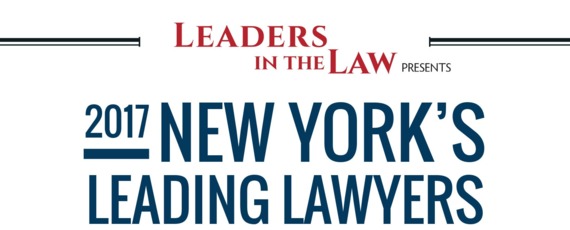Determining fault in a motorcycle accident in New York depends on the specific circumstances of the collision. Liability is based on negligence, meaning the party that failed to exercise reasonable care is held responsible. For example, other motorists are often at fault for motorcycle accidents due to behaviors such as failing to yield, distracted driving, and not checking blind spots before changing lanes or merging, and hitting motorcyclists.
The New York motorcycle accident attorneys at Friedman, Levy, Goldfarb, Green & Bagley understand and appreciate the risks and dangers faced by New York State’s almost 400,000 licensed riders. If your bike is damaged and you suffer injuries because a negligent motorist caused a crash, we can help. Our skilled team will work to recover compensation for your damages and losses so you can get back on your bike as soon as possible. Call today for a free consultation.
“My attorney, Nick Bagley, was so well thought out. He had exceptional attention to detail and a tremendous ability to explain everything so that a novice like me could understand everything that was going on.”
Injured Due to Negligence? Let Us Fight for Your Rights!
How is Fault Determined in a New York Motorcycle Accident?
Fault in a New York motorcycle accident is determined via the negligence standard. As with other types of motor vehicle accidents, the plaintiff must show the following:
- Duty: The defendant had a duty of care to follow traffic laws and operate their vehicle safely.
- Breach of duty: The defendant breached that duty of care, whether by reckless or inattentive driving, speeding, or other forms of negligence.
- Causation: The breach of duty was a direct cause of the accident and subsequent injuries.
- Damages: The accident resulted in quantifiable damages, such as medical expenses and lost wages.
Damage awards are intended to make you whole for those losses and are the basis for compensation. The stronger these elements, the better your ability to be reasonably and fairly compensated.
Are Motorcyclists Covered by No-fault Insurance in New York?
Under New York law, no-fault insurance typically provides automatic coverage for medical expenses and a percentage of lost wages for drivers and passengers involved in car accidents, regardless of who was at fault. However, motorcycles are explicitly excluded from this coverage.
Although no-fault insurance does not apply, motorcyclists can seek compensation through other types of coverage, such as liability Insurance. New York requires motorcyclists to carry liability insurance, which covers injuries or property damage the motorcyclist may cause to other parties. However, it does not cover the motorcyclist’s injuries.
Motorcyclists must rely on their health insurance to cover medical expenses after an accident, or they can file a personal injury lawsuit or a liability claim against the at-fault driver’s insurance to recover damages, including medical expenses, lost wages, and pain and suffering.
Can Multiple Parties Be at Fault in a Motorcycle Accident?
Multiple parties can share fault in a motorcycle accident in New York. The state follows a pure comparative negligence rule, meaning that liability for an accident can be divided among all parties based on their percentage of fault. This rule applies to motorcyclists, drivers, pedestrians, and even third parties like municipalities or manufacturers.
For example, a motorcyclist was traveling 10 miles over the speed limit at the time of the accident, but the driver who hit them was intoxicated. In addition, a malfunctioning traffic signal also contributed to the accident, so the jurisdiction in charge of the road may also hold some responsibility.
How Does Pure Comparative Negligence Affect Compensation in an Accident?
Compensation is reduced according to the percentage of fault, as determined by a jury. For instance, if a jury determines that the motorcyclist was 30 percent at fault for the collision, a $100,000 award is reduced to $70,000. If the jury determines that the motorcyclist is 90 percent at fault, that $100,000 award is reduced to $10,000.
Pure comparative negligence provides more opportunities for victims to receive damages proportional to their degree of responsibility. In addition, knowing that courts will apportion fault, parties are often motivated to negotiate and settle cases out of court, saving time and legal costs.
What Evidence is Used to Establish Fault After an Accident?
Determining fault in a motorcycle accident in New York requires substantial evidence to establish how the crash occurred and who is responsible. In a state that follows pure comparative negligence, evidence plays a critical role in identifying each party’s level of fault and ensuring a fair allocation of liability.
Gathering the necessary documentation and evidence is essential for building a strong case and may include the following:
- Medical records
- The official accident report from law enforcement
- Eyewitness testimony
- Testimony by expert witnesses like accident reconstructionists
- Photos from the crash scene
- Vehicle damage and debris
- Video surveillance footage or dashcam footage
- Traffic data from GPS and navigation services
How Do You File a Claim After a Motorcycle Accident?
Filing a claim after a motorcycle accident in New York requires prompt action, thorough documentation, and clear communication with insurers.
- File an accident report by calling 911 at the scene. If you cannot, file a report with the Department of Motor Vehicles (DMV) within 10 days if there are injuries, fatalities, or significant property damage (over $1,000).
- Request a copy of the police report for your records, as it will document initial findings about fault and damages.
- Inform your motorcycle insurance provider about the accident as soon as possible. Provide facts about the crash but avoid admitting fault. Stick to factual descriptions and let the investigation determine liability.
- With your attorney, file a liability claim against the at-fault driver outlining the damages and injuries you suffered. Obtain their insurance details at the scene or through the police report.
If a fair settlement cannot be reached, your attorney can file a personal injury lawsuit against the at-fault party.
Statute of Limitations for Motorcycle Accidents in New York
In New York, the statute of limitations for filing a personal injury lawsuit is generally three years from the accident date. However, if the accident involved a government vehicle, such as a Metropolitan Transit Authority bus, a police car, or a city garbage truck, the statute of limitations is much shorter.
For an accident involving a state-owned vehicle, a Notice of Intention must be served on the Office of the Attorney General within 90 days of the accident to preserve your legal rights. If the city or a local municipality owns the vehicle, a Notice of Claim must be filed within 90 days. If your motorcycle collision involved a U.S. government vehicle, such as a U.S. Post Office truck, you have two years to file a claim.
Are There Exceptions to the Statute of Limitations?
Yes, there are exceptions to the statute of limitations. In New York, you can obtain a motorcycle learner permit at the age of 16. If the injured motorcyclist is under 18, the statute of limitations is extended until their 18th birthday, when they are able to make legal decisions on their own behalf. If the person has a disability, such as a serious mental illness, the statute of limitations is extended until the individual is considered legally competent.
How Can a Delay in Filing Your Claim Affect Your Case?
Failing to file a claim within the statute of limitation deadline generally means your case cannot go forward. That is why it is imperative to consult a New York motorcycle accident attorney as soon as possible.
Schedule a Free Consultation
If you were seriously injured in a motorcycle accident, you need the services of an experienced New York motorcycle accident lawyer at Friedman, Levy, Goldfarb, Green & Bagley, P.C. Schedule a free, no-obligation consultation today. We serve residents of Manhattan, Brooklyn, Queens, The Bronx, and Staten Island, as well as those in Long Island, Westchester County, Rockland County, and the Hudson Valley. Because we work on a contingency basis, you pay no legal fees unless you receive compensation.



 When you are injured in an accident due to the negligent, reckless or willful conduct of another, you may be entitled to receive a settlement. Often times, these settlements are paid out by insurance companies. Unfortunately, if you are a Medicare beneficiary, you may have to forfeit some or all of the settlement you receive.
When you are injured in an accident due to the negligent, reckless or willful conduct of another, you may be entitled to receive a settlement. Often times, these settlements are paid out by insurance companies. Unfortunately, if you are a Medicare beneficiary, you may have to forfeit some or all of the settlement you receive. Each year, over 70 million tickets to Major League Baseball games are sold in cities across the country. Fans flock to these games for the live action – the opportunity to see their favorite players in the flesh, enjoy a few hot dogs and belt out the fan favorite “Take Me Out to the Ballgame” with thousands of other die-hards during the seventh inning stretch. Unfortunately, each year some of this “live action” causes injuries to spectators when a foul ball or flying bat (and occasionally, a player trying to get that heroic out) finds its way into the crowded stands. If you’ve witnessed one of these incidents or have been a victim of one, you’ve likely wondered what happens next? Will the team pay for medical care? Does the injured party have a right to sue?
Each year, over 70 million tickets to Major League Baseball games are sold in cities across the country. Fans flock to these games for the live action – the opportunity to see their favorite players in the flesh, enjoy a few hot dogs and belt out the fan favorite “Take Me Out to the Ballgame” with thousands of other die-hards during the seventh inning stretch. Unfortunately, each year some of this “live action” causes injuries to spectators when a foul ball or flying bat (and occasionally, a player trying to get that heroic out) finds its way into the crowded stands. If you’ve witnessed one of these incidents or have been a victim of one, you’ve likely wondered what happens next? Will the team pay for medical care? Does the injured party have a right to sue? If you have been injured in an accident, and another party is to blame, you may be able to obtain monetary damages from that person or business to compensate you for medical expenses, loss of income and pain and suffering as a result of the accident.
If you have been injured in an accident, and another party is to blame, you may be able to obtain monetary damages from that person or business to compensate you for medical expenses, loss of income and pain and suffering as a result of the accident. Each year, thousands of Americans take to the roads on bicycles. This mode of transportation is touted as being more cost-effective and more environmentally friendly than motor vehicles but when it comes to safety, cycling can come with a much greater risk. According to the National Highway Traffic Safety Administration, 39,000 individuals were injured in motor vehicle crashes in 2012. That same year, 724 cyclists lost their lives following accidents on the roads.
Each year, thousands of Americans take to the roads on bicycles. This mode of transportation is touted as being more cost-effective and more environmentally friendly than motor vehicles but when it comes to safety, cycling can come with a much greater risk. According to the National Highway Traffic Safety Administration, 39,000 individuals were injured in motor vehicle crashes in 2012. That same year, 724 cyclists lost their lives following accidents on the roads.





